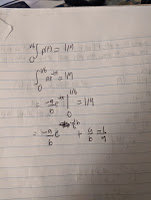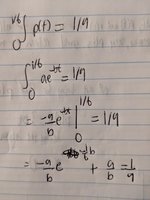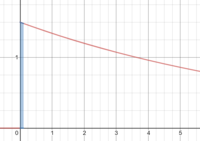notgoodatmath777
New member
- Joined
- Nov 1, 2020
- Messages
- 4
Ray has finally saved up enough money to make his dream of opening an ice cream store come true. He measure the time t in minutes between customers arriving and tries to model it using a probability density function. He decides that the probability density functions takes the form of p(t) or r(t) where, t > 0, p(t) = a e^(-bt) and r(t) = m / (t+k)^2, where a, b, m, and k are constants.
a) How should p(t) and r(t) be defined for t < 0? Explain.
b) About 1/9 of the time, the next customer arrives within 10 seconds of the previous one. He uses this to approximate the value of his density functions at t=0. His approximation comes from the interpretation: "The probability of the next customer arriving between 0 and 10 seconds after the previous one is approximately 1/9" What should the value of his density functions at t=0 be?
c) Ray sets p(0) and r(0) equal to the value he found in (b), and solves for the values of a, b, m, and k. What values should she find? Remember that p(t) and r(t) are both probability density functions.
d) Ray finds that the median amount of time between customers arriving is slightly over 1 minute. Based on this, which of p(t) and r(t) is a better model for the arrival time between customers?
a) How should p(t) and r(t) be defined for t < 0? Explain.
b) About 1/9 of the time, the next customer arrives within 10 seconds of the previous one. He uses this to approximate the value of his density functions at t=0. His approximation comes from the interpretation: "The probability of the next customer arriving between 0 and 10 seconds after the previous one is approximately 1/9" What should the value of his density functions at t=0 be?
c) Ray sets p(0) and r(0) equal to the value he found in (b), and solves for the values of a, b, m, and k. What values should she find? Remember that p(t) and r(t) are both probability density functions.
d) Ray finds that the median amount of time between customers arriving is slightly over 1 minute. Based on this, which of p(t) and r(t) is a better model for the arrival time between customers?



